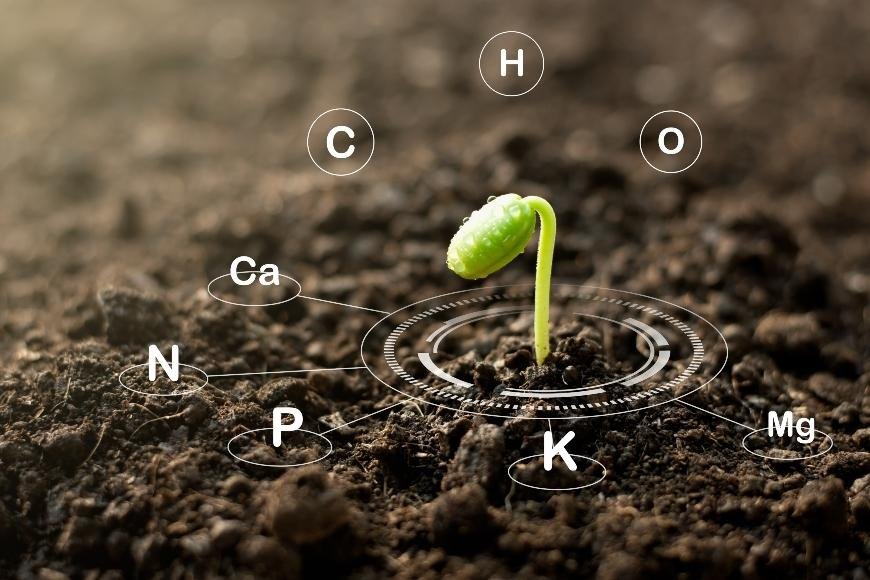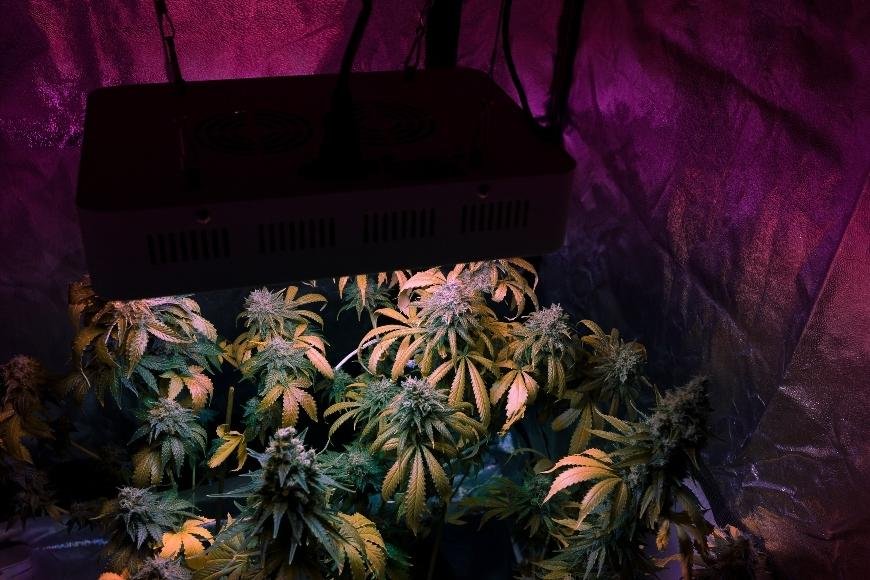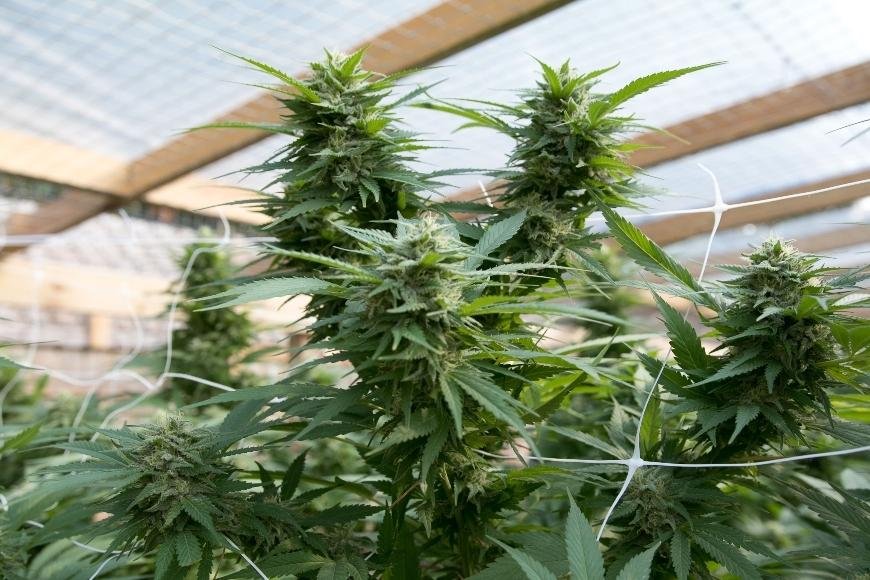Mobile and Immobile Cannabis Nutrients Explained
Explore mobile and immobile cannabis nutrients explained for growers, learn their roles, and optimize your plants' health and yields in our guide.

Mobile and Immobile Cannabis Nutrients Explained is a crucial topic for those who are passionate about cultivating medical cannabis plants. A thorough understanding of these nutrients can significantly impact the health, growth, and overall yield of your cannabis plants. In this blog post, we will delve deep into the world of mobile and immobile nutrients to provide you with valuable insights that can enhance your cultivation skills.
We'll begin by defining mobile and immobile nutrients and exploring their differences. Next, we will discuss essential cannabis nutrients such as nitrogen, phosphorus, and potassium that play vital roles in plant nutrition. Furthermore, we'll teach you how to recognize nutrient deficiencies in both older leaves and newer leaves so that you can effectively correct them using appropriate solutions.
By the end of this informative piece on Mobile and Immobile Cannabis Nutrients Explained, not only will you have improved your knowledge about plant growth but also gained practical tips for increasing yields while maintaining high-quality produce from your medicinal cannabis plants.
Table of Contents:
- Mobile Nutrients in Cannabis
- Nitrogen's role in photosynthesis and new growth
- Phosphorus for energy transfer and flowering
- Potassium's influence on water regulation
- Immobile Nutrients in Cannabis
- Recognizing Nutrient Deficiencies
- Correcting Nutrient Deficiencies
- Monitoring Soil Chemistry
- Organic Living Soil vs Supplemented Nutrition
- Frequently Asked Questions Mobile and Immobile Cannabis Nutrients Explained
- Conclusion
Mobile Nutrients in Cannabis
Mobile nutrients, such as nitrogen (N), phosphorus (P), potassium (K), magnesium (Mg), sulfur(S), iron(Fe), boron(B) copper(Cu), are easily transported within cannabis plants and show deficiency symptoms on older leaves. These elements play essential roles in plant growth, metabolic functions, stress tolerance, root growth, and root system structure. Understanding their importance helps growers identify deficiencies early for optimal cultivation.
Nitrogen's role in photosynthesis and new growth
Nitrogen is a key component of chlorophyll molecules which enable photosynthesis to take place, as well as being integral for the formation of amino acids necessary for protein synthesis and cell division. It also plays a vital role in the formation of amino acids which are necessary for protein synthesis and cell division - both key factors contributing to healthy cannabis plant development. When there is a lack of nitrogen available to the plant, it may exhibit yellowing or wilting on its lower leaves due to its inability to produce sufficient amounts of chlorophyll.
Phosphorus for energy transfer and flowering
Phosphorus, another mobile nutrient essential for cannabis plants' health, aids with energy transfer processes like respiration and photosynthesis by acting as an integral part of ATP molecules - cellular currency responsible for storing energy required during these reactions. Additionally, phosphorus promotes robust root systems while encouraging strong flower production during the blooming phase; thus making it indispensable when cultivating medical cannabis strains rich in therapeutic compounds like CBD or THC.
Potassium's influence on water regulation
Potassium is a mobile nutrient that helps regulate water balance within cannabis plants by controlling the opening and closing of stomata - tiny pores on plant surfaces responsible for gas exchange. This function allows the plant to maintain proper hydration levels, which in turn supports overall growth and development. A deficiency in potassium can lead to weak stems, slow growth rates, and reduced resistance against pests or diseases.
Mobile nutrients in cannabis play a vital role in the plant's health and growth, making it essential to understand their purpose. Immobile nutrients also contribute to the overall wellbeing of cannabis plants; they are just as important for maintaining proper nutrition levels.

Immobile Nutrients in Cannabis
Calcium (Ca), manganese (Mn), and molybdenum (Mo) are immobile nutrients, making them difficult to transport within cannabis plants. This means that when there is a deficiency of these nutrients, the symptoms will appear on newer leaves. Understanding the importance of immobile nutrient requirements is crucial for ensuring healthy plant development.
Calcium's Contribution to Cell Walls and Membrane Stability
Calcium plays a vital role in maintaining cell wall structure and membrane stability in cannabis plants. It also helps with stress tolerance by regulating enzyme activity and ion balance. Calcium deficiencies can lead to stunted growth, weak stems, leaf curling or distortion, and even bud rot during flowering stages. To prevent calcium deficiencies from occurring, growers should ensure their growing medium has adequate levels of this essential immobile nutrient.
Manganese's Involvement with Enzyme Activation
Manganese, another important immobile nutrient for medicinal cannabis cultivation, is involved in various metabolic processes like photosynthesis, respiration, nitrogen metabolism as well as amino acid synthesis within the plant cells . Manganese deficiency can result in interveinal chlorosis - yellowing between leaf veins - along with necrosis or dead spots on leaves due to impaired enzyme activation which affects overall plant health negatively. Growers must monitor their soil chemistry closely, making sure it contains sufficient amounts of manganese while avoiding excessive levels that could cause toxicity issues.
Symptoms of Immobile Nutrient Deficiencies:
- Calcium deficiency: Stunted growth, weak stems, leaf curling or distortion, and bud rot during flowering stages
- Manganese deficiency: Interveinal chlorosis (yellowing between leaf veins), necrosis or dead spots on leaves
In order to maintain a balanced diet of both mobile and immobile nutrients for cannabis plants, it is essential that growers monitor their soil chemistry closely. This will help them identify any potential deficiencies early on and make necessary adjustments to ensure optimal plant growth and development.
Recognizing Nutrient Deficiencies
Identifying nutrient deficiencies based on whether symptoms appear on older or newer leaves allows growers to administer necessary supplements effectively while maintaining proper soil chemistry. Cultivators can use this understanding to maximize their plants' growth prospects by supplying them with a suitable combination of macro and micronutrients required for ideal development.
Signs of Mobile Nutrient Deficiencies
Mobile nutrients, such as nitrogen (N), phosphorus (P), potassium (K), magnesium (Mg), sulfur(S), iron(Fe), boron(B) copper(Cu), are easily transported within cannabis plants and show deficiency symptoms on older leaves. Some common signs include:
- Nitrogen: Yellowing of lower leaves, slow growth, and weak stems
- Phosphorus: Dark purple or red coloration in the veins of older leaves
- Potassium: Curling leaf edges, brown spots on lower foliage, and poor flower development
- Magnesium: Interveinal chlorosis between veins in the old growth
Symptoms of Immobile Nutrient Deficiencies
Immobile nutrients like calcium(Ca)manganese(Mn)molybdenum(Mo)) cannot be relocated within the plant if needed which causes deficiency symptoms to appear on newer leaves. Some common signs include:
- Calcium: Curling and twisting of new growth, brown spots on young leaves
- Manganese: Interveinal chlorosis in younger leaves, necrotic spots, and poor flower development
- Molybdenum: Yellowing or curling of leaf edges in new growth
Recognizing nutrient deficiencies is essential for successful cultivation, and it can be achieved by being aware of the signs and symptoms associated with mobile and immobile nutrients. By taking corrective measures such as adjusting pH levels or leaching the growing medium, growers can ensure that their plants are receiving optimal nutrition to support healthy growth.
Correcting Nutrient Deficiencies
To correct identified nutrient deficiencies, it's important that cultivators review their growing conditions along with supplementary ingredients ensuring pH levels do not drop below 5.6 if they observe stunted new growth or darker green leaves that are smaller than usual. Leaching the substrate is an effective solution for most nutrient problems and should be completed within 20 minutes to avoid further complications.
Adjusting pH Levels for Optimal Nutrient Uptake
Maintaining proper pH levels in your growing medium is crucial for optimal cannabis plant nutrition. When the pH level falls outside of the ideal range (between 5.8 and 6.5), certain nutrients may become unavailable to plants, leading to deficiencies or toxicities. To modify the pH level, you can employ commercially available products such as phosphoric acid (for reduction) or potassium hydroxide (to increase). Always measure your nutrient solution's pH after adding any amendments to ensure accurate readings.
Leaching the Growing Medium
If a deficiency persists despite adjusting your pH levels, consider leaching your growing medium. This process involves flushing excess salts and built-up nutrients from the soil by saturating it with water until runoff occurs - usually taking about 20 minutes per container size gallon used during regular watering cycles (e.g., one-gallon pot = twenty-minute flush). After leaching, allow time for drainage before resuming normal feeding schedules; this will help restore balance while avoiding potential root damage due to overwatering.
- Step 1: Water your plants with plain, pH-adjusted water (no nutrients added).
- Step 2: Wait for the water to drain out of the bottom of the container.
- Step 3: Repeat steps one and two until you have flushed an amount equal to three times the volume of your growing medium.
Note that leaching should be used sparingly as it can also strip away beneficial microorganisms from your soil. Regular monitoring of soil chemistry and nutrient levels will help prevent deficiencies in the first place, reducing the need for corrective measures like leaching.
Monitoring Soil Chemistry
Maintaining proper soil chemistry is crucial in ensuring healthy cannabis plant growth. Growers must invest in inexpensive meters like TDS meter to monitor soil conditions accurately, including pH levels after adding any additional supplements or fertilizers. This will help cultivators make informed decisions about their plants' nutritional needs.
Importance of pH balance
The pH balance plays a significant role in the availability and uptake of nutrients by cannabis plants. Most cannabis plants grown hydroponically should have a pH range of 5.8 to 6.5, while those in soil require a slightly higher range of 6 to 7 for optimal growth.
- A too acidic environment (low pH) can cause nutrient lockout, preventing essential elements from being absorbed by the roots.
- An overly alkaline environment (high pH) can lead to deficiencies as some nutrients become less available for absorption.
To maintain an ideal pH level, it's essential to regularly test your growing medium using reliable tools such as digital testers or litmus paper strips.
Tools for measuring soil chemistry
Besides monitoring the overall health of your cannabis plants through visual inspection, utilizing specific tools can provide valuable insights into their nutritional status:
- pH Meter: A digital device that measures acidity or alkalinity levels within water-based solutions; useful for both hydroponic systems and traditional potting mixes with added liquid fertilizer.
- TDS Meter: Total Dissolved Solids (TDS) meters measure the concentration of dissolved salts and minerals in your nutrient solution, providing an indication of its overall strength. This helps growers adjust their feeding regimen accordingly to avoid over- or under-fertilization.
- EC Meter: Electrical Conductivity (EC) meters work similarly to TDS meters but display readings in different units; they are often used interchangeably by cannabis cultivators for measuring nutrient concentrations within hydroponic systems.
Incorporating these tools into your regular plant care routine will help you maintain optimal soil chemistry, ensuring that mobile nutrients and immobile nutrients remain available for uptake by your medical cannabis plants.

Organic Living Soil vs Supplemented Nutrition
Choosing the right method for providing nutrients to your cannabis plants is essential for their overall health and development. In this section, we will discuss the benefits of using organic living soil and when it might be necessary to consider supplemented nutrition.
Benefits of Organic Living Soil
Organic living soil is a rich, natural growing medium that contains various microorganisms, beneficial bacteria, fungi, and other elements that contribute to healthy plant growth. This type of soil provides many naturally occurring nutrients required for cannabis cultivation without causing toxic conditions due to over-fertilization often observed among home gardeners who apply ten times more fertilizer than farmers growing food crops. Some advantages of using organic living soil include:
- Sustainable: It promotes long-term fertility by recycling nutrients from decaying plant matter.
- Biodiversity: The presence of diverse microorganisms helps improve nutrient availability and uptake by plants.
- Disease Resistance: Healthy microbial populations can help suppress harmful pathogens in the soil.
- Natural Pest Control: Beneficial insects thrive in organic soils which can help control pests naturally.
When to Consider Supplemented Nutrition
In some cases, outdoor plants grown organically may grow slowly if not provided with supplemental nutrition. Factors such as poor weather conditions or depleted native soils may require additional support for optimal growth. Here are some situations where you should consider supplementing your cannabis plants' nutritional needs:
- Poor Native Soils: If your local area has low-quality or depleted soils lacking essential nutrients needed for healthy plant growth,
- Weather Conditions: Heavy rainfall or drought can lead to nutrient deficiencies in the soil, thus affecting plant growth.
- High-Yielding Strains: Some cannabis strains require higher levels of nutrients to reach their full potential. In these cases, supplemental nutrition may be necessary for optimal growth and development.
To ensure your plants receive adequate nutrition without overloading them with excess nutrients, it's essential to monitor your growing medium's pH levels and use a balanced nutrient solution designed specifically for cannabis cultivation. By understanding the benefits and drawbacks of organic living soil versus supplemented nutrition, you can make informed decisions about what works best for your specific situation.
Frequently Asked Questions Mobile and Immobile Cannabis Nutrients Explained
What is the difference between mobile and immobile nutrients in cannabis?
Mobile nutrients in cannabis can be easily transported within the plant, allowing them to move from older leaves to new growth when needed. Immobile nutrients, on the other hand, cannot be moved once absorbed by the plant and remain fixed in their original location. This distinction affects how nutrient deficiencies manifest and are addressed.
How would you describe the difference between mobile nutrients and immobile nutrients?
Mobile nutrients are those that can relocate within a cannabis plant to support its growth needs, while immobile ones stay put after absorption. The primary mobile elements include nitrogen (N), phosphorus (P), potassium (K), magnesium (Mg), whereas calcium (Ca), sulfur(S), iron(Fe) etc., fall under immobile category. Deficiency symptoms differ based on this mobility characteristic.
What is the difference between immobile and mobile nutrient deficiency?
The main difference lies in how these deficiencies present themselves: Mobile nutrient deficiencies typically appear first on older leaves as they're relocated to newer growth areas; conversely, immobile nutrient deficiencies show up initially on younger leaves since they cannot be redistributed from older parts of the plant.
What nutrients are immobile in cannabis?
In cannabis plants, some key examples of immobile elements include calcium(Ca), sulfur(S), boron(Br) , copper(Cu ), zinc(Zn )and molybdenum(Mo). These essential micronutrients play vital roles but don't have ability for internal movement like their counterparts do once taken up by roots or foliage cells.
Conclusion
In conclusion, understanding the difference between mobile and immobile nutrients is crucial for cannabis cultivation. Mobile nutrients move throughout the plant while immobile nutrients stay in one place, affecting different parts of the plant. Macronutrients like nitrogen, phosphorus and potassium are key for cannabis cultivation; it is essential that growers understand their importance.
Recognizing and correcting nutrient deficiencies can help improve plant health and growth, leading to increased yields and better quality produce. By applying this knowledge to your growing practices, you can ensure a successful harvest.




























































































































